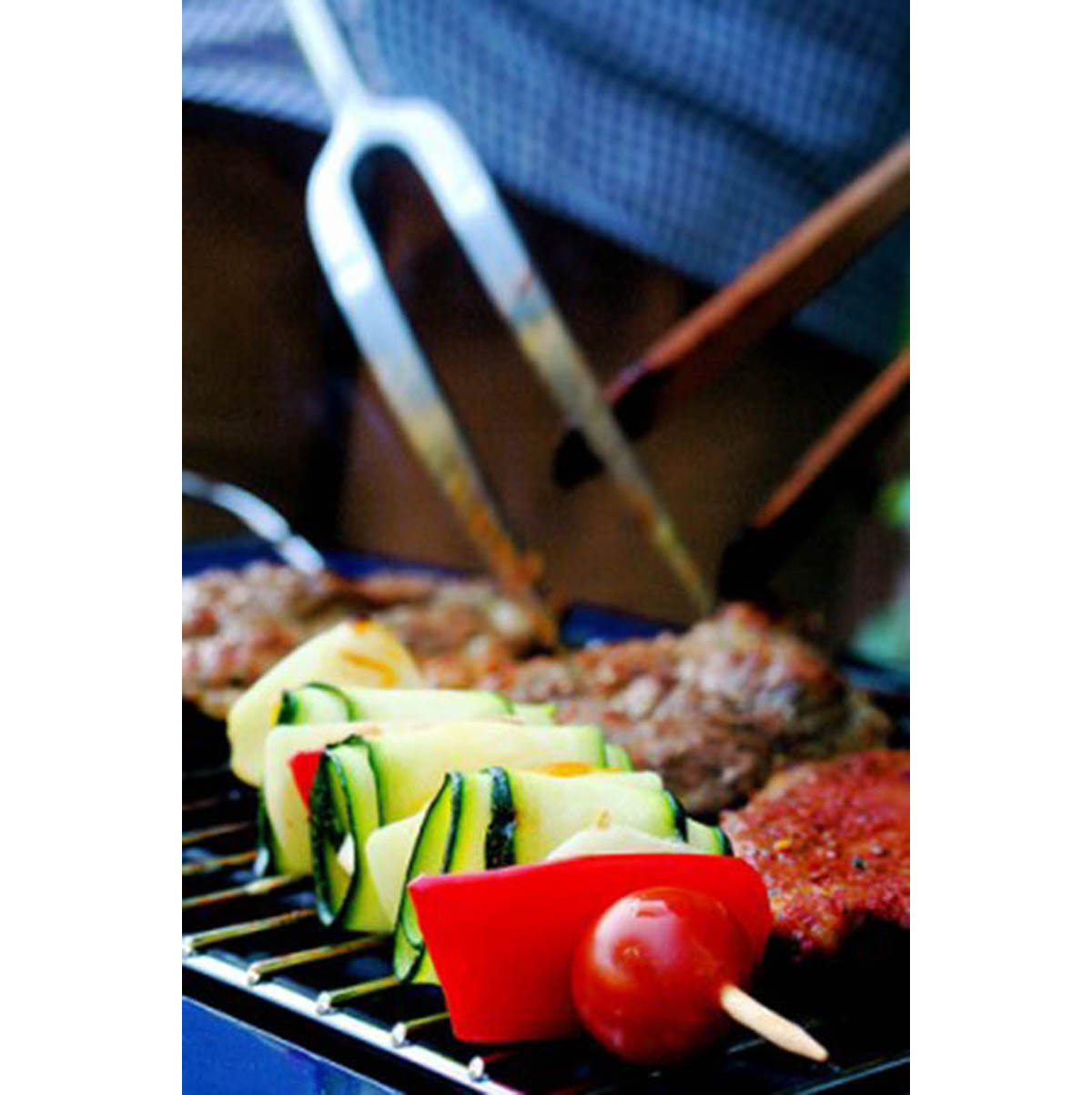Table of Contents
Carcinogens. Certain methods of barbecuing can form heterocyclic amines, also known as HCAs. These are potentially cancer-causing compounds that are created when creatine, which is naturally present in meat, combines with amino acids in the presence of oxygen. Fast-cooking under high heat without using any sauces creates the most HCAs. Slow-cooking with low heat and preparing the meat with a marinade creates the fewest HCAs.
Some kinds of barbecuing, however, don't create any carcinogens at all. If the entire cooking process occurs at temperatures below 212° F/100° C in a smoker, there are no HCAs. And microwaving for two minutes before putting meat under a grill also stops the formation of these cancer-causing chemicals, even if the meat is cooked well done without any marinade or sauce.
Indoor and Outdoor Air Pollution. The process of barbecuing can release carbon dioxide, carbon monoxide, benzene, toluene, methylene chloride, and chloroform. These chemicals are especially likely to build up in "hot pot" or "fire pot" restaurants or in Japanese, Chinese, and Korean restaurants with the serving table built around a grill. Exposure to these chemicals is much more of a problem for restaurant workers than for occasional visitors, however.
In Texas, the residues of fatty acids from meats are a traceable source of outdoor air pollution. Unless you "eat and breathe BBQ," however, the only personal problems you are likely to encounter from outdoor barbecuing are those associated with the use of charcoal.
HealthCanada goes so far as to label charcoal as a potentially hazardous product. The problems from charcoal are due to manufacturing processes that combine charcoal with mined coal, oil, limestone, or wood preservatives. Natural oak charcoal produced by Greenlink, Lazzari, and Noram de México, and any product certified as organic by the Rainforest Alliance's SmartWood Program, are safe to use in your backyard BBQ.
BBQ doesn't have to be meat


Another health consideration for backyard barbecuers is excessive consumption of fat and protein that goes along with most BBQ celebrations. A summer BBQ usually means eating meat, and eating lots of it. But meat is not the only food that can be barbecued.
Try corn on the cob, removing the silks but keeping the husks attached so the kernels will not dry out--or pop. Char poblano peppers, let them cool, remove the peel, and dice to use them to make flavorful salsa. Make vegetable kabobs, cutting all the pieces about the same size to make sure they cook at the same time.
And don't forget the salads. Mayonnaise-based salads, by the way, may have more calories, but they also "suffocate" the bacteria that might cause them to spoil. You'll still want to keep them under refrigeration when they are not being served.
Summer BBQ can be safe and fun for everyone. Just be sure to cook meat slowly, to wash hands and utensils before and after using them for raw meat, and to cook with natural heat sources. And always leave room for more--you don't have to overeat to have a great time at your summer BBQ.
- Adamson RH, Thorgeirsson UP. Carcinogens in foods: Heterocyclic amines and cancer and heart disease. Advances in Experimental Medicine and Biology 1995, 369:211-220
- Bjeldanes LF, Morris MM, Felton JS, et al. Mutagens from the cooking of food. II. Survey by Ames/Salmonella test of mutagen formation in the major protein-rich foods of the American diet. Food and Chemical Toxicology 1982, 20(4):357-363
- Nader CJ, Spencer LK, Weller RA. Mutagen production during pan-broiling compared with microwave irradiation of beef. Cancer Letter 1981, 13(2):147-152
- Stavric B. Biological significance of trace levels of mutagenic heterocycylic aromatic amines in human diet: A critical review. Food and Chemical Toxicology 1994, 32(10):977-994


Your thoughts on this